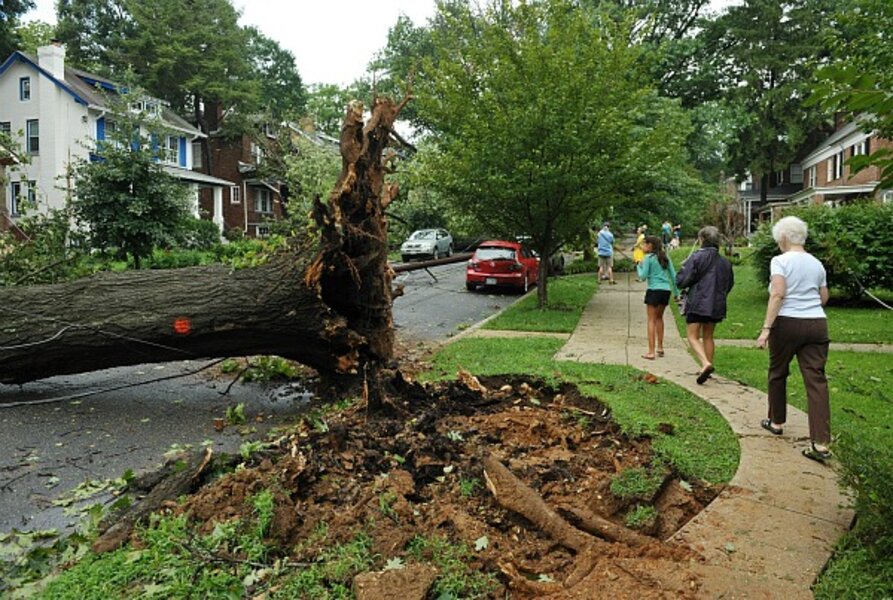Irene update: Did New York dodge a bullet?
Loading...
The worst of tropical storm Irene – at least for New York and New Jersey – has passed, says Homeland Security Secretary Janet Napolitano.
And to many New Yorkers who caught glimpses of sunshine Sunday morning, their experience seemed to confirm that the Big Apple indeed had dodged a bullet – at least one of major caliber – as hurricane Irene was downgraded to tropical storm Irene.
“But even though the storm has been downgraded, it poses no less a threat to communities,” Sec. Napolitano said at a news briefing Sunday morning. “Our number 1 message is that we’re not out of the woods yet. Hazards persist in communities that already have seen the storm pass.”
According to the National Hurricane Center, Irene is continuing on its path toward New England and Canada’s Maritime Provinces at 26 miles per hour with sustained winds of 60 mph.
[ Video is no longer available. ]
Bill Read, the hurricane center’s director, says “heavy rains will continue to be an issue for upstate New York and New England.” With a predicted 2-6 inches of rainfall, he says, some areas could see record levels of flooding.
Predictable natural events such as hurricanes and tropical storms involve three stages of official action: preparation, response, and recovery.
“We’re really moving into response and damage assessment,” Craig Fugate, director of the Federal Emergency Management Agency (FEMA), said at Sunday’s briefing.
In contrast to FEMA’s handling of hurricane Katrina in New Orleans in 2005, the agency is being praised by governors of both parties.
“The federal response was excellent,” Maryland Gov. Martin O’Malley (D) said on NBC’s Meet the Press Sunday. “They were with us since day one.”
Also speaking on Meet the Press, New Jersey Gov. Chris Christie (R) said his state’s officials were “coordinating well with the federal government.”
Irene, which has been linked to 13 deaths in five states and knocked out power to some 3 million residents, has caused considerable flooding along some parts of its path, including some areas of New York City.
Speaking on CNN, former Homeland Security Secretary Michael Chertoff said that could cause further damage even as the waters recede and are pumped from underground locations.
"The challenge of New York is that so much of the electricity and other infrastructure is below the surface," he said.
While evacuees have been allowed to return home in some places where Irene has passed (including Ocean City, Md.) resident are being advised to stay indoors while the response and recovery is underway.
"Do not leave your homes. It is still not safe," New Jersey Christie said Sunday. "We've got flooding everywhere and flash flooding in all different parts of the state."
[ Video is no longer available. ]





